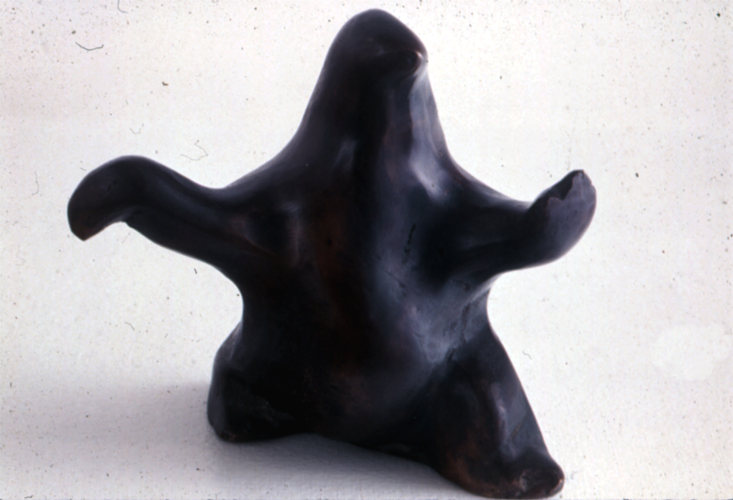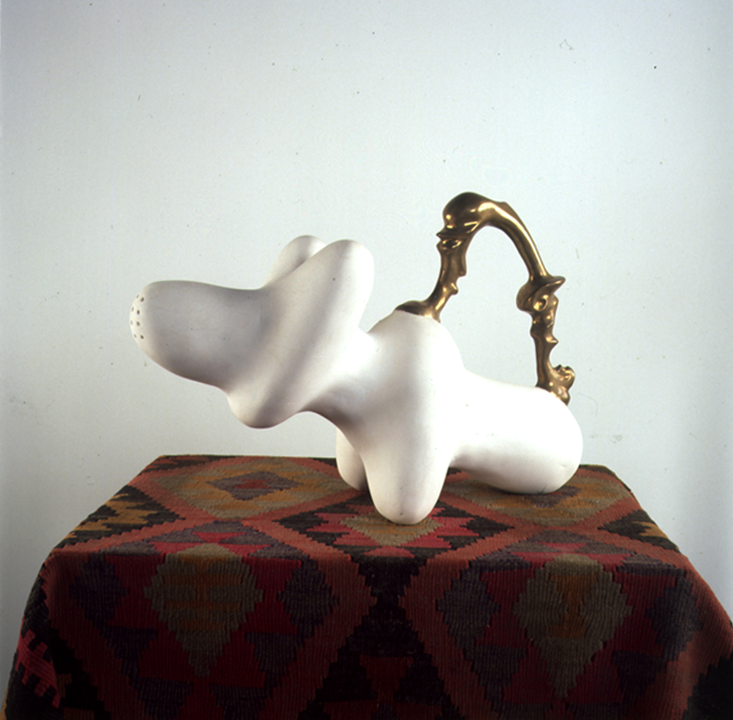This article is part of Nautilus’ month-long exploration of the science and art of time. Read the introduction here.
In the studio, time does not pass—there is only an “eternal now.” The art coming from the studio is a crystallized form of the artist’s experience of time, a witness to habits from his culture and his reaction to them. Eventually, though, clock-time interrupts, breaking the protected circle of the studio, invading paradise to save it from itself. Reality appears, oftentimes unwanted, as The Deadline.
Inside the timeless space of the studio, the artist may choose to meditate on the nature of time itself—one of the most difficult subjects there is. Space can be treated as an object among others, making it easier to think about. Time, on the other hand, loses its “timeliness” when it is represented in the abstract. In the end, time can only be shown by the transformation it leaves behind, by evidence of construction or of destruction—in ruins, for example. Rodin made sure to leave visible the traces of mold-making and casting, and to leave parts semi-finished, in order to show time passing in the work.

My own thinking about time, as a sculptor, has been greatly informed by ideas from science. I began my work as a sculptor in the ’80s, and it was around that time that I became familiar with Ilya Prigogine. He won the Nobel Prize in Chemistry in 1977 for work on dissipative structures—which operate far from thermodynamic equilibrium but also in a steady state—and self-organizing systems—which produce order out of disorder. Both topics revolve around the nature of reversibility and the direction of the arrow of time.
The idea of natural self-generating forms, in particular, was influential in my work. I realized that sculpture could, in a way, generate itself if only I slowed down the speed of its execution, in a slow version of the Surrealist’s automatic writing. I accomplished this by carving stone (which is a very slow process) without a model or a plan. In my mind the self-generating patterns of chemicals in Prigogine’s experiments were similar to the way shapes, ideas, and memories were taking form by themselves, through my hands and mind.

In 1982, the social scientist Gregory Bateson drew my attention. What interested me most was the introduction of time in the theory of types of Bertrand Russell. It showed that when time is introduced to logical paradoxes, the result is an oscillating system. For example, the liar’s paradox (“This Statement is False”) made into an electric circuit will simply oscillate between on and off, like a door ringer.
Bateson was working with irreversible time in the context of evolution. He saw the entire living world as a web of connections, since all forms evolve together. And this corresponded with my own ideas. My work used materials from the academic tradition, but at the same time it jumped over regular categories, mixing incompatible styles and creating suggestive but ambiguous forms.

Later in the ’80s, again using the same slowed-down Surrealist method, I began experimenting with hybrid forms. The work was now combining varying forms—of furniture and animals, for example—and using different styles and materials. These hybrid forms found a resonance in the work of Lynn Margulis, the biologist who helped advance the theory of symbiogenesis. According to this theory, complex eukaryotic cells evolved through a symbiotic relationship among simpler, prokaryotic cells like bacteria.
None of my works were conceived intellectually as exercises in philosophy of science. But many found resonances with scientific ideas that revolved around the nature of time. More generally, I learned to heed my art’s own demands on my time. They were not the demands of the clock or of the calendar. I slowed myself down to allow the work to dictate its intentions. I did so by making many pieces simultaneously and going from one to another, depending on the mood of the moment. I learned that an artist is not so different from a dancer or a musician. Dancers “don’t go anywhere,” nor does the musician. “The Minute Waltz” of Chopin is better played in two minutes, but no pianist has ever complained about it. The only way time is perceived either in dance or in music is as rhythm, not as a limit.
My work has its own rhythms. I give myself (or my art gives itself) freedom to go back in time to grab ideas and formal intuitions from different periods. I also go back to my own history and take ideas, sometimes 20 or 30 years old, and try to make them new. The eventual lack of success in this rehash of old forms is very interesting to me, because it shows me one can never recuperate a primordial state of innocence, but only a parody of it. That, too, can be interesting. Art, in its own strange and bewildering way, gives answers to questions that have yet to be asked.
Saint Clair Cemin is a postmodern sculptor who lives and works in New York City and Beijing.
Lead image: Three Seats (1988)


























